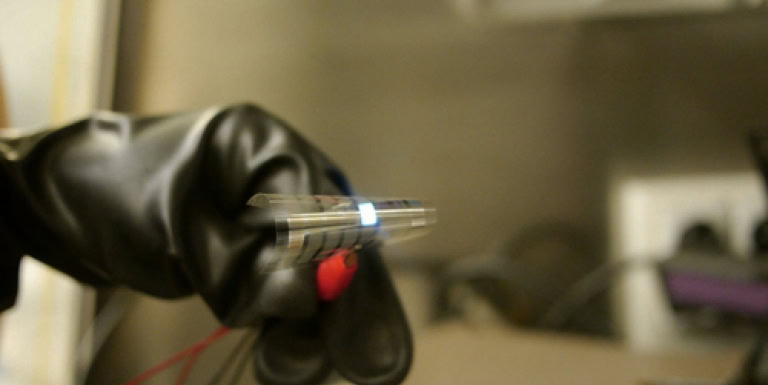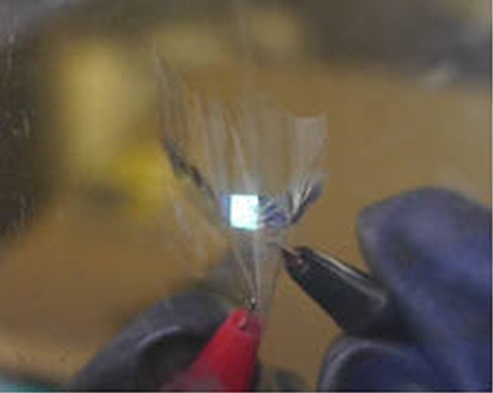Affiliate links on Android Authority may earn us a commission. Learn more.
KETI's ultra-thin OLED is a precursor to foldable smartphones
Published onApril 10, 2015

Researchers at the Korea Electronics Technology Institute (KETI) have announced the world’s most flexible, ultra-thin OLED electrode material, which can be folded at an angle thinner than a strand of hair (0.1mm), leading the way towards ultra-flexible displays. Flexible OLED technology is the secret behind Samsung’s Galaxy Edge smartphones and LG’s G Flex range, which has opened up new ergonomic designs for mobile products.
The new technology was created by fusing silver nano wire with a colorless polyimide in the OLED panel, rather than using Indium tin oxide, which easily cracks when bent. Previously, silver nano wires had not been used in flexible OLED displays because they produce a rough surface. This problem was solved by placing the wire in the polymer substrate and then smoothing the surface using plasma irradiation. Previously the maximum curve radius of flexible OLED was around 5mm, so this is a substantial improvement.
“With this OLED electrode material, smartphones can be rolled and fully folded like paper,” – Korea Electronics Technology Institute

Furthermore, the OLED has excellent performance properties. The transmission of visible light reaches 90 percent and sheet resistance reached 8 ohm/sq, handily above the industry criteria of 85 percent transmission and 15 ohm resistance to be classed as a foldable material.
“We are currently discussing mass production with major chemical material manufacturers in Korea, expecting that a fully-foldable smartphone will be available on a commercial scale within two years to come.”
KETI anticipates that this breakthrough could lead to the first commercially available foldable smartphone within just two years. However, we have no idea what such a device would look like or how it would function, and wearables or electronic paper seem like more suitable uses for this technology in the near future.
We are still waiting on major breakthroughs in other areas of flexible electronics before we can talk about a competitor to today’s high-end devices. Even so, this is a promising step forward for ultra-flexible electronics.